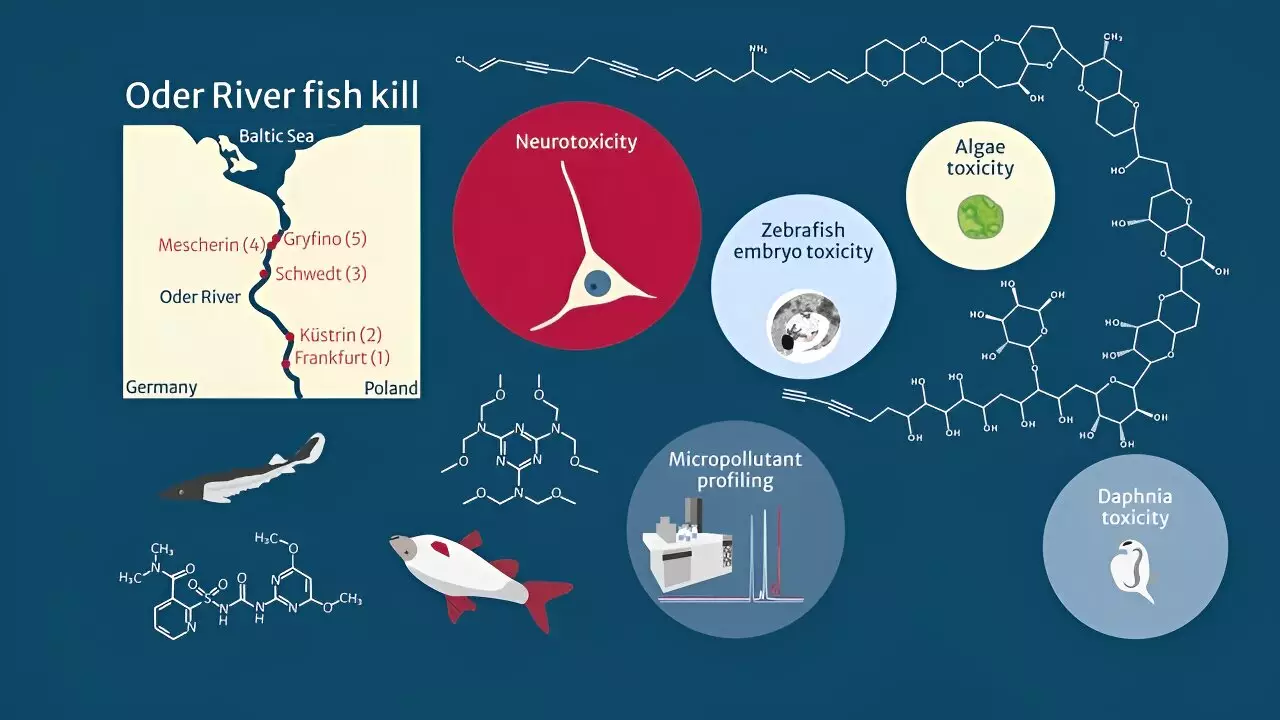The environmental disaster that occurred on the Oder River in Germany was caused by a deadly combination of excessive salinity, high water temperatures, low water levels, and excessive inputs of nutrients and wastewater. These factors triggered a bloom of the brackish water algae Prymnesium parvum which produced an algal toxin known as prymnesin. This toxin had a lethal effect on the aquatic organisms in the river, leading to a massive die-off of fish, mussels, and snails. Up to 60% of fish biomass and up to 85% of mussel and snail biomass were lost during this catastrophic event.
A team of scientists from the Helmholtz Center for Environmental Research (UFZ) conducted a thorough analysis of water samples taken from the Oder River during the disaster. Their research, published in Nature Water, revealed that high concentrations of organic micropollutants in the water exacerbated the lethal effects of prymnesin on the aquatic organisms. The team detected more than 120 organic micropollutants in the water samples, including flame retardants, polymer additives, corrosion inhibitors, and pesticides. These pollutants, although present in typical concentrations for European rivers, posed an additional stress on the already compromised ecosystem of the Oder River.
To assess the risk posed by the pollutants to aquatic life, researchers used a risk quotient (RQ) analysis. The RQ is calculated as the ratio between the concentration of a pollutant and its predicted no effect concentration (PNEC). If the RQ exceeds a value of 1, it indicates a potential risk to aquatic organisms. The researchers found that the mixture risk quotients (RQmix) of the detected micropollutants ranged from 16 to 22 at the sampling sites, significantly higher than the threshold value of 1. This highlighted the potential risk that these pollutants posed to the aquatic ecosystem of the Oder River.
Laboratory experiments conducted by the researchers showed that the chemical cocktails extracted from the water samples had clear effects on algae, water fleas, and zebrafish embryos. These effects were further exacerbated when the pollutants interacted with the prymnesins present in the water. The neurotoxic effects of these chemical mixtures were also investigated in human nerve cells in vitro, showing that even at very low concentrations, prymnesins had a detrimental effect on nerve cell outgrowth and viability. The mixture modeling revealed that prymnesins played a dominant role in these neurotoxic effects, while the micropollutants contributed as well.
The environmental disaster on the Oder River serves as a stark reminder of the delicate balance of ecosystems and the devastating effects of pollution on aquatic life. The high proportion of prymnesins in the chemical mixtures found in the water, combined with the presence of micropollutants, puts immense pressure on the already stressed ecosystem of the Oder River. As human activities continue to impact natural water systems, it is crucial to prioritize conservation efforts and effective pollution control measures to prevent further disasters like the one witnessed on the Oder River in 2022.
The critical analysis of the environmental disaster on the Oder River highlights the complex interplay between natural factors, pollution, and their combined effects on aquatic organisms. The findings of the research conducted by the UFZ and other collaborating institutions underscore the urgent need for sustainable environmental practices and stringent pollution regulations to protect our precious water resources. Only through concerted efforts and a commitment to conservation can we mitigate the devastating impact of pollution on our rivers and lakes.


Leave a Reply